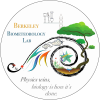Reports
Contents
| Title: | Diffuse PAR ARM vs Delta-T vs Rotating Shadow Band | ||||||||||
| Date: | 2018-01-09 | ||||||||||
| Data File: | DiffusePAR_ARMvsRSB_20180109.csv | ||||||||||
| Refers to: | |||||||||||
|
This is an inter-comparison of home made, Kipp & Zonen based Rotating Shadow Band (RSB) diffuse PAR sensor with Delta-T BF5 diffuse PAR sensor and the ARM Shortwave Array Spectroradiometer–Hemispheric (SASHe) sensor at the ARM Southern Great Plains site from May 5 2017 to January 9th 2018. There are also incoming total PAR from three Licor Quantum senors. I processed the 2.5Hz data from the rotating shadow band to find min and max values for each rotation of the shadow band then made 30min averages from those. I made 30min averages from the 1min BF5, Licor and ARM sensors. Then I also calculated solar angles and sunrise and sunset. I used the sunrise and sunset to calculate the fraction of the sky blocked by the shadow band. This ranges from about 4% at dawn and dusk to about 13% at midday. The columns are: datetime time in Local Standard Time The raw ARM data are measurements of direct solar, hemispheric diffuse, and total hemispheric shortwave irradiance over a continuous spectral range from approximately 300 nm to 1700 nm at a rate of about 30 seconds. This results in about 514 bands of about 0.6 nm in the PAR range from 400 to 700 nm. The units are in W/m2/nm and need to be processed into umol/m2/s and summed. The number of photons Np per second and surface unit can be calculated from the irradiance (I) by (note: the nm value for λ is used): Np= I/Ep= I•((λ•10-9)/h•c) = I [W/m2]•λ•10-9[m]•/ (1.988•10-25) [J•m]   = I•λ•5.03•1015 [1/(m2•s)] h = Planck constant = 6.626e-34 J•s, c = speed pf light 299792458 m/s The photon flux can be determined by converting the number of photons to µmoles of photons converting irradiance [W/m2] into quantum flux [µE]: EQF = Np/(NA•106) (with Avogadro number NA=6,022•1023 mol-1) / m2•s EQF = (I•λ•5.03•1015[1/(m2•s)])/(6.02•1017[1/µmol])      = I•λ•0.836•10-2 [µmol/(m2•s) = µE] The total PAR from all sensors was relatively similar within +-10%. But the uncorrected RSB diffuse PAR was about 30% lower than the BF5 diffuse PAR. After applying the correction for the sky blocked by the shadow band the RSB diffuse PAR is still about 16% lower than the BF5 and ARM data. Might be interesting to look at these differences on cloudy days versus clear days. Looking at the time series, cloudy days seem a tighter match than sunny days. Figure 1. Time series of the three different diffuse PAR in relation to total PAR from the BF5 sensor. You can see that the ARM sensor seems to drift off every couple of weeks or more. This is probably a misalignment of its shadow band. I tried to eliminate the times where I felt the ARM diffuse PAR was drifting towards the total PAR which improved the relationship with the BF5 data, however the ARM data still seems a bit higher.
Figure 2. Regression of the BF5 against the ARM sensor - all data in green and 'good' data as determined by looking at the time series in blue.
Figure 3. Regression of the RSB data against the BF5 data. We should check the total PAR recorded by each sensor to see it there are differences between the sensors. As expected all these regressions are tight. Three three Licor sensors are nearly identical. The RSB is more similar to the Licor senors than the ARM or BF5 sensors though there may be a little more scatter. This is reasonable since at its heart the RSB is a K&Z PAR sensor very similar to the Licor sensors.
Figure 4. Total PAR regressions One of the drawbacks of the RSB is that the part of the sky blocked by the shadow band changes over the day. At dawn and dusk about 4% of the sky is blocked and at midday about 13% of the sky is block. Figure 5. Time series of uncorrected and corrected RSB Diffuse PAR. |
|||||||||||
| |

